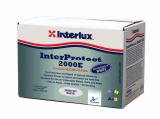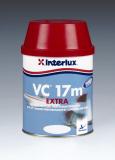
Whether you have a 16' runabout or a 55' cruiser, it seems like it's a 700' cruise ship when it comes time to paint the bottom. If you're repainting the bottom, be sure you use the right type of paint based on what's on your boat now. Some paints are not compatible with others. If you're bottom painting for the first time, there are a couple things to decide, whether you're doing it yourself or having it done by us...
Would you rather spend less money now and more time and money on labor in the future, or invest more money now and save on money and labor later on? This will help determine the type of product you put on your boat, and how often you'll have to reapply it to keep it doing what it was designed to do.
Keep in mind, bottom paint isn't just there for looks, it has a purpose. Ablative products are designed to polish off of the boat. Hard paints have antifouling biocides that leach out but leave the paint and color. Just because you see the paint, that doesn't mean you don't need to paint again. There are single-season paints, multi-season paints, standard antifouling and teflon-based paints, etc. There are also several types of primers or undercoatings from which to choose.
If this isn't the first time the bottom is being painted, it's important to know what's on your boat now. Keep in mind that some products can be covered over, and some need to be sanded or stripped to start fresh with a different product. Switching brands, if the paint TYPE is the same, won't cause a problem. But even if you're staying with the same brand, a different TYPE of paint could mean stripping the existing product back to the fiberglass. We have manufacturer's product guides to help you determine what you'll need to do.
Make sure the hull is in good condition. Check for cracks or blistering in fiberglass, and seal seams on wood boats. Good prep work is 90% of any job, especially when it comes to bottom work. Do any necessary repairs, or have them done. Ignoring problems will only create worse damage and more expensive repairs later. If you're starting with a bare surface, sand the surface first to ensure good adhesion. Otherwise, the bottom will flake or peel. If you're working with a a previously painted surface, scuff the existing paint and clean residue thoroughly for good adhesion of the new paint. Pay particular attention to any areas where there is flaking or peeling. This is a sign of poor prep the last time, and will cause problems with the new paint if not prepped well this time around.

Using a barrier coat (undercoater/sealer) is a good idea. It will protect your new boat from water absorption, as well as seal your older boat. Even new fiberglass will allow absorption of water, so the best time to start using a barrier coat for maximum protection is when the fiberglass is new.
There are special primers and bottom paints specifically made for metal boats as well.The proper thickness is also a factor, for both barrier coatings & bottom paint, if your boat is to be protected properly. Multiple thin coats are better than one thick coat. Skimping on the number of coats, or adding too much thinner to "stretch" the paint, won't save you money in the long run. Follow manufacturers' instructions for application, and the product will do what it's supposed to, for as long as it's supposed to. Otherwise, you'll just be doing the job again sooner and spending more time and money than you saved by taking shortcuts, or your boat won't be getting the protection it should.

When choosing a bottom paint system, consider performance expectations, price and labor, then decide whether you prefer a more expensive product that saves labor and works better or longer, or a less expensive product that will require annual recoating and more labor because it does not protect your boat as long.
To help determine when it's time to reapply ablative/polishing paints, use a different color for your first coat of paint. Then do the color you want. When the color under it starts to show through, you'll know you're down to the last coat and it's time to repaint. This method offers the protection needed instead of waiting until you see bare spots. Also, overcoating existing ablative/polishing paints requires much less prep than bare epoxy or gelcoat.